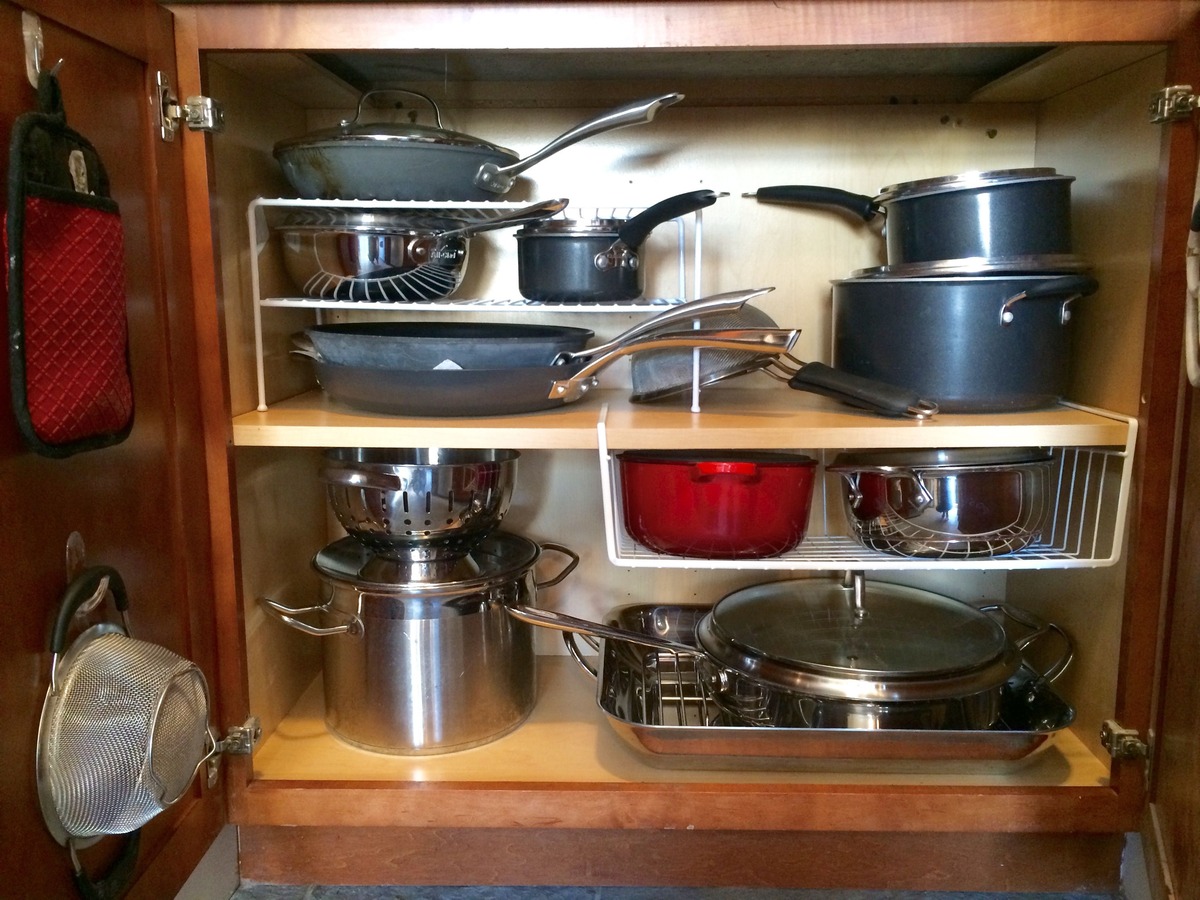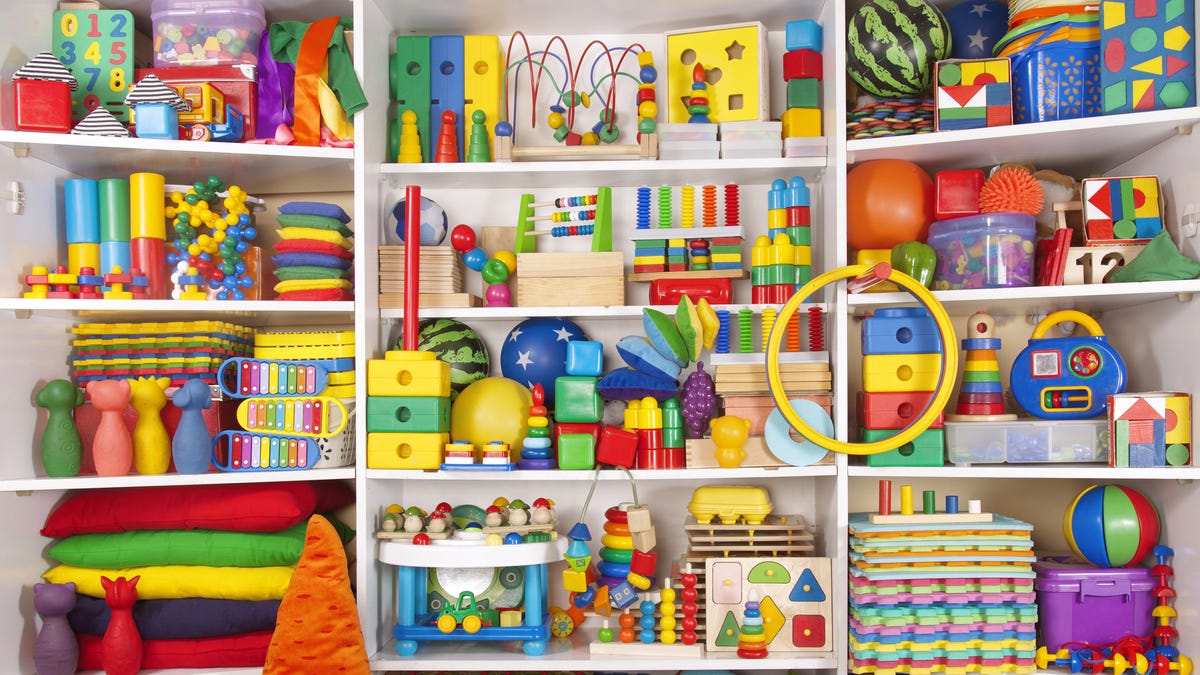

Articles
How To Store Ethanol
Modified: March 2, 2024
Learn the best ways to store ethanol safely with our informative articles. Ensure proper handling and avoid any potential hazards.
(Many of the links in this article redirect to a specific reviewed product. Your purchase of these products through affiliate links helps to generate commission for Storables.com, at no extra cost. Learn more)
Introduction
Ethanol is a versatile and widely used chemical compound that serves various purposes in industries, laboratories, and households. From fuel production to manufacturing pharmaceuticals, ethanol plays a significant role in many applications. However, due to its flammable nature, proper storage and handling of ethanol is crucial to ensure safety.
In this article, we will discuss the importance of storing ethanol safely and provide practical tips on how to store ethanol to minimize risks and ensure the well-being of those handling it. By following these guidelines, you can prevent accidents and maintain a secure environment in which to store and utilize ethanol.
Before delving into the specific storage techniques, it is important to emphasize the overall significance of safety precautions when working with ethanol. Proper handling not only protects individuals from potential harm but also helps to preserve the quality and potency of the substance.
Whether you are a professional using ethanol in an industrial setting or an individual who needs to store it at home for small-scale applications, understanding and implementing safety measures is of paramount importance. Let’s explore the best practices for storing ethanol safely.
Key Takeaways:
- Prioritize safety by wearing protective gear, choosing the right container, and storing ethanol in a cool, dry place away from flames. Proper handling and disposal are crucial for a safe environment.
- Ethanol disposal requires compliance with local regulations. Consider recycling programs or professional disposal services to protect the environment and public health. Always prioritize safety when working with ethanol.
Read more: What Is Bio Ethanol Fireplace
Safety Precautions
When dealing with ethanol, it is vital to prioritize safety at all times. Understanding and following these safety precautions will help minimize the risks associated with handling and storing ethanol:
- Wear Protective Gear: Always wear appropriate personal protective equipment (PPE) such as gloves, safety goggles, and a lab coat when handling ethanol. This will help protect your skin and eyes from contact and potential splashes.
- Work in a Well-Ventilated Area: Ethanol can release harmful fumes, especially in confined spaces. Ensure that you are working in a well-ventilated area to prevent the accumulation of vapors. Open windows, use fans, or work in a fume hood when handling ethanol.
- No Smoking or Open Flames: Ethanol is highly flammable, and the presence of open flames or sparks can lead to disastrous consequences. Avoid smoking, using open flames, or operating electrical equipment that may produce sparks in the vicinity of ethanol.
- No Eating or Drinking: Do not eat, drink, or store food and beverages near areas where ethanol is being stored or used. Accidental ingestion of ethanol can be extremely dangerous and could result in severe health complications.
- Keep Away from Children and Pets: Store ethanol in a secure location that is inaccessible to children and pets. Ethanol is toxic if ingested and can cause serious harm if handled improperly. Keep containers tightly sealed and out of reach.
Remember, safety should always be the top priority when working with ethanol. By taking these precautions, you can significantly reduce the risk of accidents and create a safer environment for yourself and those around you.
Choosing the Right Container
When it comes to storing ethanol, selecting the appropriate container is crucial. The container you choose should be specifically designed for storing flammable liquids and should meet the necessary safety standards. Here are some considerations to keep in mind:
- Material: Opt for containers made from materials that are compatible with ethanol, such as high-density polyethylene (HDPE) or glass. These materials are resistant to chemical interactions and help maintain the integrity of the ethanol.
- Sealability: Look for containers with a secure and leak-proof seal. Ethanol has a low boiling point, so it can easily evaporate if the container is not properly sealed. This can lead to loss of product and potentially dangerous vapors.
- Capacity: Choose a container that can hold the desired quantity of ethanol without being filled to the brim. It is important to leave some headspace to allow for expansion due to temperature changes.
- Labeling: Ensure that the container is clearly labeled with the name “Ethanol,” along with any other relevant information, such as concentration and handling precautions. This will help users identify the contents easily and ensure proper handling.
- Compatibility: Check the container’s compatibility with the storage environment. Ethanol should be stored in a cool, dry place away from direct sunlight and extreme temperatures. Avoid using containers that can deteriorate or melt under such conditions.
Remember to always inspect containers for any signs of damage or wear before filling them with ethanol. Cracks, leaks, or compromised seals can pose a safety hazard and should be addressed immediately. Additionally, keep in mind that reusable containers should only be used for ethanol storage and not for other purposes to prevent contamination.
By choosing the right container for ethanol storage, you can ensure the integrity of the substance and minimize any potential risks associated with improper storage or handling.
Store Ethanol in a Cool, Dry Place
Proper storage conditions play a crucial role in maintaining the quality and stability of ethanol. Storing ethanol in a cool and dry place helps to minimize the risk of degradation and ensures its effectiveness over time. Here are some key points to consider when storing ethanol:
- Temperature: Ethanol should be stored at a temperature below its flash point, which is around 16.6°C (62°F). Avoid exposing ethanol to high temperatures, as it can increase the risk of evaporation and potential ignition.
- Avoid Direct Sunlight: Keep ethanol containers away from direct sunlight or any other sources of UV radiation. Prolonged exposure to light can cause the degradation of ethanol and reduce its effectiveness.
- Avoid Extreme Temperatures: Fluctuations in temperature can affect the integrity of ethanol. Avoid storing it in areas that experience extreme temperature changes, such as near heating sources or refrigeration units.
- Moisture Control: Ethanol should be stored in a dry environment to prevent moisture absorption. Moisture can lead to the formation of impurities, which may affect the quality and stability of the ethanol.
- Avoid Containers in Contact with the Floor: Store ethanol containers on raised platforms or shelves. This helps to prevent any potential damage from spills, leaks, or moisture that may accumulate on the floor.
Furthermore, it is important to ensure that the storage area for ethanol is well-ventilated. Proper ventilation helps to dissipate any ethanol vapors that may build up, reducing the risk of ignition or the inhalation of concentrated fumes. If you are storing ethanol in a confined space, such as a cabinet or a room, consider installing an exhaust fan or utilizing a fume hood to maintain adequate ventilation.
By storing ethanol in a cool and dry place with proper ventilation, you can help preserve its integrity and ensure its effectiveness for your intended applications.
Keep Away from Flames and Ignition Sources
Given its flammable properties, it is crucial to keep ethanol away from flames and other sources of ignition. Even a small spark or open flame can lead to a dangerous fire or explosion. Here are some important guidelines to follow:
- No Smoking: Smoking should be strictly prohibited in areas where ethanol is stored or used. The act of smoking introduces an open flame and greatly increases the risk of ignition.
- Avoid Open Flames: Keep ethanol away from any open flames, such as candles, gas stoves, or burners. It is important to prevent direct contact between ethanol vapors and sources of ignition.
- No Electrical Sparks: Be mindful of electrical equipment that may produce sparks, such as switches, outlets, and motors. Ensure that all electrical wiring and equipment in the storage area are properly installed and in good condition.
- Grounding: Use properly grounded equipment when working with ethanol. Grounding helps to dissipate static electricity, reducing the risk of sparks and potential ignition.
- Fire Extinguishers: Have fire extinguishers readily available in areas where ethanol is stored. Familiarize yourself with the operation of these extinguishers and regularly inspect them to ensure they are in good working condition.
If a fire or ignition occurs, it is important to have a clear evacuation plan in place. Ensure that all individuals in the area know the evacuation procedure and the location of emergency exits. Safely evacuate the premises and contact the appropriate authorities for assistance.
Remember, prevention is key when it comes to fire safety. By diligently following these guidelines and keeping ethanol away from flames and ignition sources, you can significantly reduce the risk of a dangerous fire or explosion.
Store ethanol in a cool, dry place away from direct sunlight and sources of heat. Keep it tightly sealed to prevent evaporation and contamination.
Read more: How To Make Ethanol From Grass
Proper Labeling and Storage Identification
Properly labeling and identifying ethanol containers is essential for maintaining a safe storage environment. Clear labeling helps to prevent accidental misuse and ensures that everyone handling the ethanol is aware of its properties. Here are some important points to consider:
- Labeling: Clearly label all containers that hold ethanol. Include the word “Ethanol” and any other relevant information, such as the concentration or purity level. This ensures that there is no confusion about the contents of the container.
- Hazard Symbols: Consider using appropriate hazard symbols or pictograms to provide visual cues about the flammability and potential hazards associated with ethanol. These symbols should conform to relevant safety standards and regulations.
- Warning Signs: Place warning signs in the storage area to alert individuals to the presence of flammable materials. These signs should be highly visible and easily understood by all personnel working in the vicinity.
- Storage Units: If storing ethanol in cabinets or specific storage units, ensure that they are clearly labeled as “Ethanol Storage” or similar indications. This helps to prevent accidental access by unauthorized individuals who may not be aware of the flammable nature of the substance.
- Inventory Tracking: Implement a system for tracking the inventory of ethanol. This can include recording the quantity, date of acquisition, expiration dates, and any other pertinent information. Regularly update and review these records to ensure proper management of ethanol stocks.
Along with labeling, it is essential to provide proper training to all personnel who will be handling ethanol. This includes educating them about the potential hazards, necessary safety precautions, and emergency procedures. Clear communication and knowledge-sharing are key to maintaining a safe storage environment.
By properly labeling and identifying ethanol containers and storage areas, you can effectively communicate the associated hazards and ensure that everyone is aware of the proper handling and storage requirements.
Handling and Spillage
Proper handling of ethanol is crucial to minimize the risk of accidents and ensure the safety of individuals working with the substance. Additionally, knowing how to manage and clean up spills is essential in maintaining a safe working environment. Here are some guidelines for handling ethanol and addressing spillage:
- Proper PPE: Always wear the appropriate personal protective equipment (PPE) when handling ethanol. This includes gloves, safety goggles, and a lab coat or protective clothing. PPE helps protect against skin contact and potential splashes.
- Secure Containers: Ensure that ethanol containers are tightly closed and properly sealed when not in use. This prevents spills and potential evaporation.
- Use Secondary Containers for Transport: When moving ethanol from one location to another, use secondary containers specifically designed for transport. These containers provide an extra layer of protection against spillage or leakage.
- No Unapproved Transfers: Do not transfer ethanol into unapproved containers or makeshift storage solutions. Use only appropriate containers specifically designed for storing flammable liquids to avoid leakage and potential hazards.
- Spill Response: In the event of a spill, follow the appropriate spill response procedures. This may involve containing the spill, using absorbent materials to soak up the ethanol, and properly disposing of the contaminated materials.
- Control Ignition Sources: When addressing a spill, ensure that there are no nearby ignition sources. Turn off any nearby flames, electrical equipment, or sources of sparks to prevent ignition.
- Proper Disposal: Dispose of any spilled ethanol and the associated contaminated materials according to local regulations and guidelines. Contact the appropriate authorities or waste management services for guidance on proper disposal methods.
It is important to train individuals on proper handling procedures and spill response protocols. Conduct regular safety drills and refresh training as necessary to ensure that all personnel are familiar with the appropriate actions to take in case of a spill or accident.
By following these guidelines for handling ethanol and effectively addressing spills, you can maintain a safe working environment and minimize the potential risks associated with improper handling and cleanup.
Disposal of Ethanol Safely
The proper disposal of ethanol is essential to protect the environment and ensure public safety. Ethanol should never be disposed of in regular household waste or poured down drains, as it can contaminate water sources and cause harm. Here are some guidelines for safely disposing of ethanol:
- Contact Local Authorities: Check with your local environmental or waste management authorities to determine the specific regulations and guidelines for disposing of ethanol in your area. They can provide you with information about designated disposal facilities or collection programs.
- Recycling Programs: Look for recycling programs or facilities that accept ethanol. Some regions have recycling programs specifically for hazardous materials like ethanol, ensuring that it is properly processed or reused in an environmentally friendly manner.
- Evaporation: In some cases, small amounts of ethanol may be disposed of through evaporation, but only if it is allowed and safe to do so. This method should comply with local regulations and only be performed in well-ventilated areas away from open flames or ignition sources.
- Labelling and Packaging: Properly label and package ethanol for disposal. Ensure that containers are tightly sealed and clearly marked as “Waste Ethanol” or “Hazardous Material” to prevent accidents and incorrect handling.
- Transportation: When transporting ethanol waste for disposal, follow the appropriate procedures and use approved containers that meet transportation regulations. This helps to prevent spills or leaks during transportation.
- Professional Services: If handling large quantities or specialized forms of ethanol waste, consider engaging professional waste disposal services. These experts are trained in the safe management and disposal of hazardous materials, ensuring compliance with all regulatory requirements.
It is crucial to be aware of the specific regulations governing the disposal of ethanol in your area. Failure to comply with these regulations can result in legal penalties and potential harm to the environment. Take the time to research and understand the proper disposal methods available to you.
By following the appropriate disposal procedures for ethanol, you can contribute to a cleaner and safer environment while complying with local regulations and protecting public health.
Conclusion
Properly storing and handling ethanol is of utmost importance to ensure the safety of individuals and maintain a secure environment. By following the guidelines and safety precautions outlined in this article, you can minimize the risks associated with ethanol and create a safer storage and working environment.
Remember to choose the right container made of compatible materials, ensure proper labeling and storage identification, and store ethanol in a cool, dry place away from flames and ignition sources. Additionally, take the necessary precautions when handling ethanol, wear appropriate personal protective equipment, and have a spill response plan in place.
Disposing of ethanol in a responsible manner is also crucial. Check with local authorities for proper disposal methods and consider recycling programs or professional disposal services to ensure compliance with environmental regulations.
By incorporating these practices into your daily routines, whether you are working with ethanol in an industrial setting or storing it for household purposes, you can help prevent accidents, maintain a safe environment, and protect both yourself and those around you.
Always prioritize safety when working with ethanol, and consistently stay informed about the latest regulations and best practices to ensure you are implementing the most up-to-date safety measures.
By adhering to these guidelines, you can confidently and safely store, handle, and dispose of ethanol, contributing to a safer and more responsible working environment for everyone involved.
Frequently Asked Questions about How To Store Ethanol
Was this page helpful?
At Storables.com, we guarantee accurate and reliable information. Our content, validated by Expert Board Contributors, is crafted following stringent Editorial Policies. We're committed to providing you with well-researched, expert-backed insights for all your informational needs.















0 thoughts on “How To Store Ethanol”